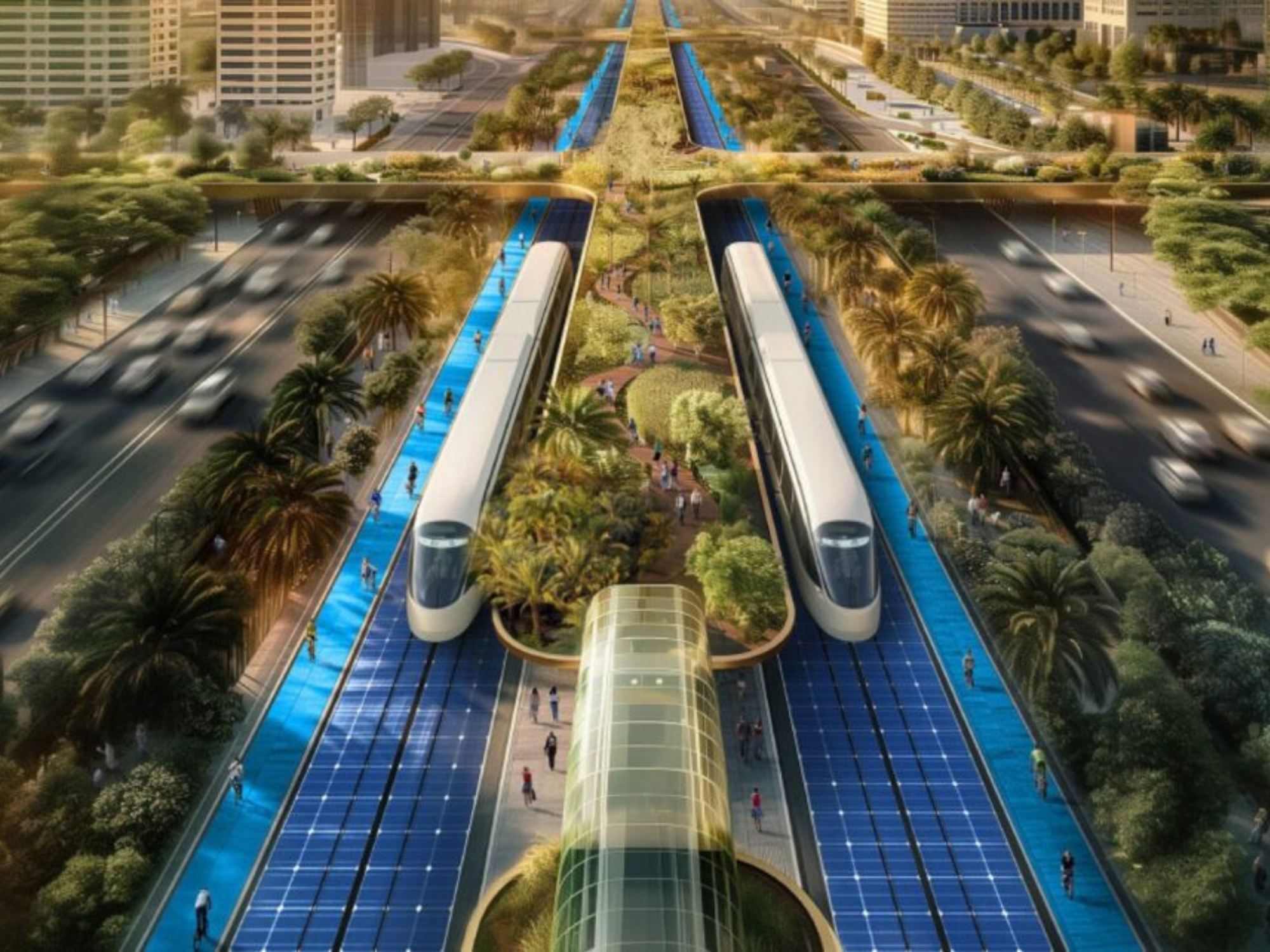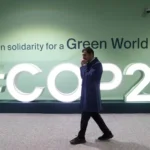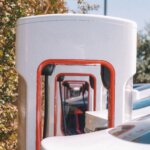Dubai has become synonymous with the world class skyscrapers, plush hotels and mega projects, but with the world slowly but gradually inching towards solar and green energy the city has rolled out a project named The Green Spine a gigantic photovoltaic highway that will make all mobility solar-powered and ultra-efficient.
An oasis in desert: A photovoltaic highway
The United Arab Emirates is an oil rich nation, however, with the world heading towards a total decarbonisation of economies, the state authorities have felt an urgent need to move away from their dependency on fossil fuel.
That is why they have embarked on increasingly ambitious architectural and urbanisation projects. Some, like the futuristic city The Line, are the target of strong questions about their viability and sustainability. Others have been economically successful, such as the artificial island of La Palma Jumeirah, which has generated huge profits as a real estate project.
Urb, the company in charge of the new photovoltaic highway, says this new mega-project will be more viable than previous ones, and will help reduce emissions and make mobility more efficient.
The Green Spine promises to be not only a roadway for more efficient and sustainable transport, but also a whole area of circular economy.
The Green Spine: the cleanest and most efficient photovoltaic highway in the world
Urb’s proposal is much more than a photovoltaic highway, but rather an area built around Dubai’s Sheikh Mohammad Bin Zayed Expressway, which stretches 64 kilometres.
A photovoltaic park of the same length will be installed here, with a capacity to generate 300 MW of energy that could electrify some 130,000 homes.
This energy would also power a line of electric trams that would connect the entire area by means of emission-free, high-speed, electric transport. It will also install a system of bioswales, a series of ducts and pipes that help capture rainwater and distribute it properly to prevent the flooding that has recently affected them.
The project aims to create a green corridor to help reduce emissions and make traffic more efficient. That is why more than one million trees and native plants will also be planted along the entire length. In this way the photovoltaic highway will also be a biodiversity protection area, which could become a trend to be emulated in other parts of the world.
A futuristic city: where cars will be replaced with bicycles
The Green Spine will also have a network of cycle paths and pedestrian walkways that will allow people to travel to service and leisure areas, etc. in a matter of minutes, reducing the need for private vehicles. In addition, a sensor system will be installed to provide information about traffic, energy consumption and emission levels.
According to the project specifications, once the photovoltaic highway is completed, it could reduce more than one million tonnes of CO2 emissions. There are also some projects for commercial and entertainment areas among others.
The project feasibility of Green Spine project
The project seems very promising but it needs to be seen if it will see light of the day and garner investment required to make it feasible. We have seen the mega projects like Neom and The Line both in Saudi Arabia could not garner much enthusiasm from the investors.






